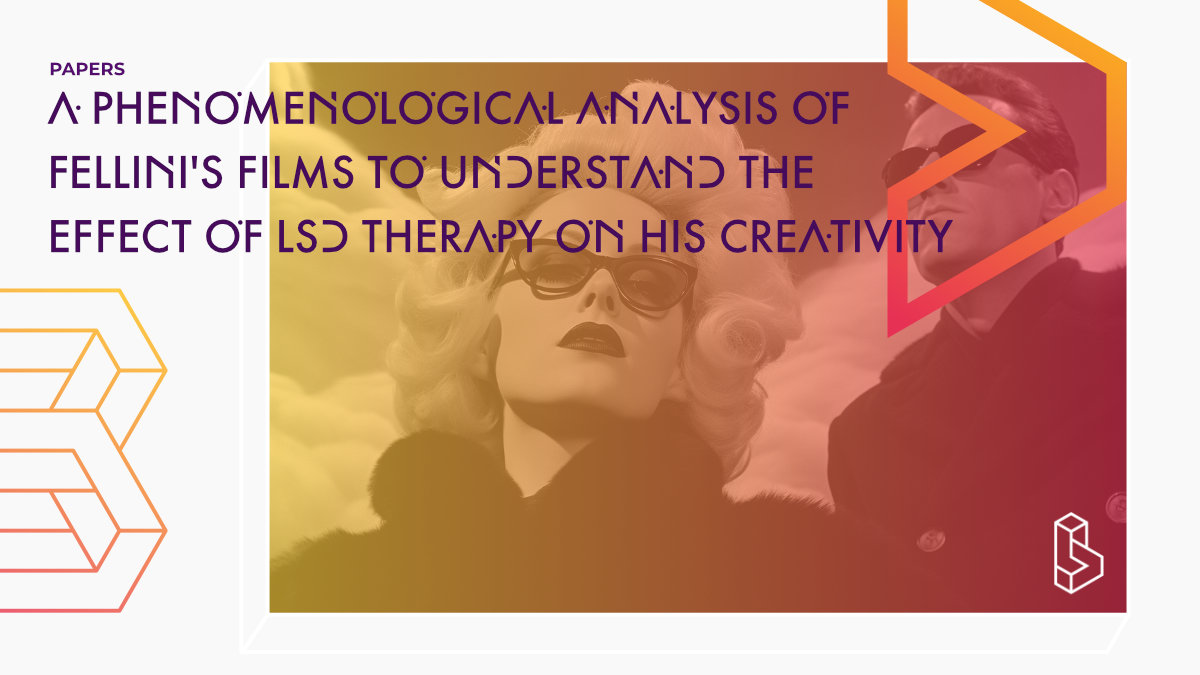This phenomenological analysis (n=1) examines the influence of LSD on the creative insights of Federico Fellini, a renowned film director. The study explores how LSD use under controlled therapeutic guidance enhanced his creativity across four domains: time, space, body and others, and perception of the self. The resulting impacts included irregular time flow, brilliant and detached colours, independent sounds, deformed human bodies, and the collapsing boundaries between dream and reality, leading to his films’ distinctive “Felliniesque” style.
Abstract of A phenomenological analysis of Fellini’s films to understand the effect of LSD therapy on his creativity
“Since its discovery in 1943, LSD has been used by artists, scientists, and intellectuals, amongst others, to stimulate their creative insights. Federico Fellini, one of the most important film directors in the XX century, used LSD when it was still legal under the guidance of his psychoanalyst during a phase of personal and creative crisis. This article proposes a phenomenological analysis of how his filmmaking and his creativity was enhanced after using LSD in such controlled therapeutic settings, according to four main domains: (a) time, (b) space, (c) body and others and (d) perception of the self. In particular, time flows irregularly and is punctuated by disorienting flashbacks, colours become supernaturally brilliant and detached from objects, sounds pop up independently from any visible source, and human bodies become often deformed, grotesque and caricatural. The boundaries between dream- and reality-worlds also collapses. His films became so distinctive and original that an adjective was coined felliniesque.”
Authors: Antonio Metastasio, Silvio Mignogna, Riccardo Paci, Milena Mancini, Fabio Melelli, Enrico Lando, Ornella Corazza, Giovanni Stanghellini
Summary of A phenomenological analysis of Fellini’s films to understand the effect of LSD therapy on his creativity
Fellini, his time and the LSD
Federico Fellini was one of the most remarkable and unique film directors, and we believe that LSD impacted his creativity. The authors believe it might be worth considering these compounds again as creativity aids.
A semi-synthetic diethyl-amine derivative, obtained from Claviceps Purpurea, an ergot fungus that grows on rye and wheat, LSD has psychoactive properties. It was discovered accidentally five years after its syntheses.
The novel substance LSD, produced and distributed by Sandoz starting in 1947 under the brand name Delysid, was widely used in the scientific field, at first as an ideal model for psychiatrists to understand the psychotic or delusional state in schizophrenic patients and later as an adjuvant tool in psychotherapy.
Find this paper
https://doi.org/10.1177/20503245231186723
Open Access | Google Scholar | Backup | 🕊
Cite this paper (APA)
Metastasio, A., Mignogna, S., Paci, R., Mancini, M., Melelli, F., Lando, E., Corazza, O., & Stanghellini, G. (2023). A phenomenological analysis of Fellini’s films to understand the effect of LSD therapy on his creativity. human enhancement, LSD, creativity, phenomenology, cinema, psychotherapy, 0-0.
Study details
Compounds studied
LSD
Topics studied
Creativity
Study characteristics
Case Study
Participants
1
Humans

